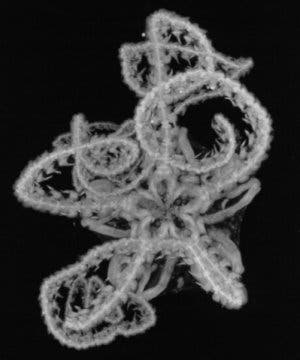Taxonomy is one of the most underappreciated scientific fields. It’s necessary because it gives us the initial, important information about every known plant and animal in the world. Taxonomy describes the appearance and, now more commonly, the genetic differences of every new species. It is only after this description that other studies can be performed. For example, then you can learn more about the animal/plant’s behaviour or ecology, or medicinal uses, or conservation status.
Collections provide lots of historical information, such as about pollution, diseases, and extinctions. However, taxonomy is not very well-funded. Already there are hundreds of thousands of species that are stored in collections but not named and it takes 21 years on average after a species is discovered for it to be described. Unfortunately, they aren’t enough specialists and funding to go at a quicker pace.

Japanese researchers found a creative way around this problem to get the money for a study. They turned to crowd-funding and became the first study in the country to be funded this way. Thanks to its donors, the scientists found important morphological characteristics of the fleshy brittle star.
The state of taxonomy
Currently, a lot of science is focussed on new and exciting methods and publication in high-profile journals. Taxonomy journals don’t have a high-impact rating and the work is pretty low-tech (though it also has been adapting to the times) so the research is less appreciated. Curator, skilled taxonomists, positions are being cut back. They are being replaced with managers or lowly qualified technicians who don’t have much knowledge about the plants or animals.
Although taxonomy is relatively cheap to perform, taxonomists have a lot of trouble finding money for their research for the above reasons. Firstly, taxonomy projects are often hard to get public funding for, especially because they are competing for funding with high profile studies, such as medical and advanced molecular studies. To make matter worse, last year on March 16th, the U.S. National Science Foundation indefinitely cut support funding to natural history museums that took care of the crucial maintenance of the collection, such as storage and specimen care.

Fleshy brittle star
In light of the financial struggles associated with taxonomy, Dr. Masanori Okanishi who works on sea stars at Ibaraki University, turned to a crowd-funding platform called academist for his latest project. His study is the first in Japan to be funded in such a way. His post entitled “Taxonomy of bathyal euryalid ophiuroids,” though not the most exciting title, appealed to enough Japanese citizens to successfully raise 634,500 JPY (ca. 5,600$).
Though not a massive sum, it was enough to him to fund part of his study using micro-computed tomography (µCT) to see the features of the fleshy brittle star (Asteronyx loveni). Otherwise, it is hard to study the brittle star because it has very thick skin. Before, the scientists had to dissolve to skin but they weren’t able to see all of its important features then. µCT scanning uses X-rays to create a 3D model and images and does not involve destroying the specimen. In the end, they could see the structures of interest on the brittle star, including skeletal ossicles and soft tissues.

“The present case indicates that crowdfunding will increase the chances to finance the funds for researchers in those disciplines and activate the research area,” conclude Dr. Okanishi and his co-authors.
Dr. Okanishi’s experience has demonstrated that taxonomists need to look for other sources of funding and be a bit creative. There are several major crowdfunding websites for science research now, connecting science more with the public. Now the average person has the power to support projects that he or she thinks are important!


